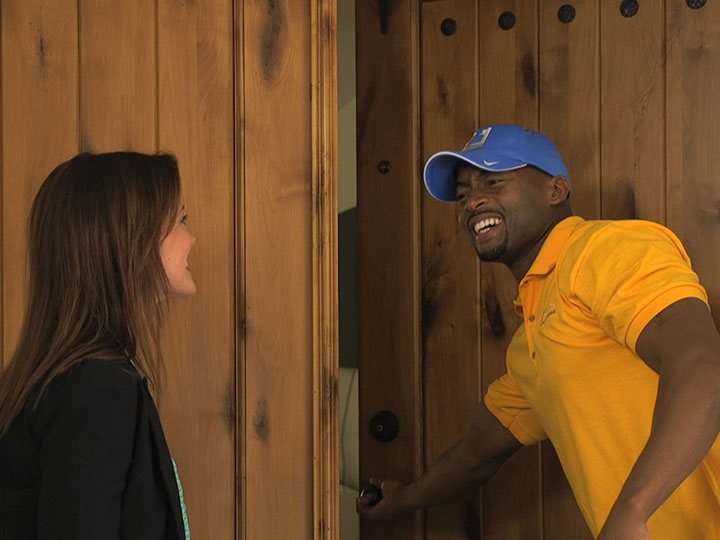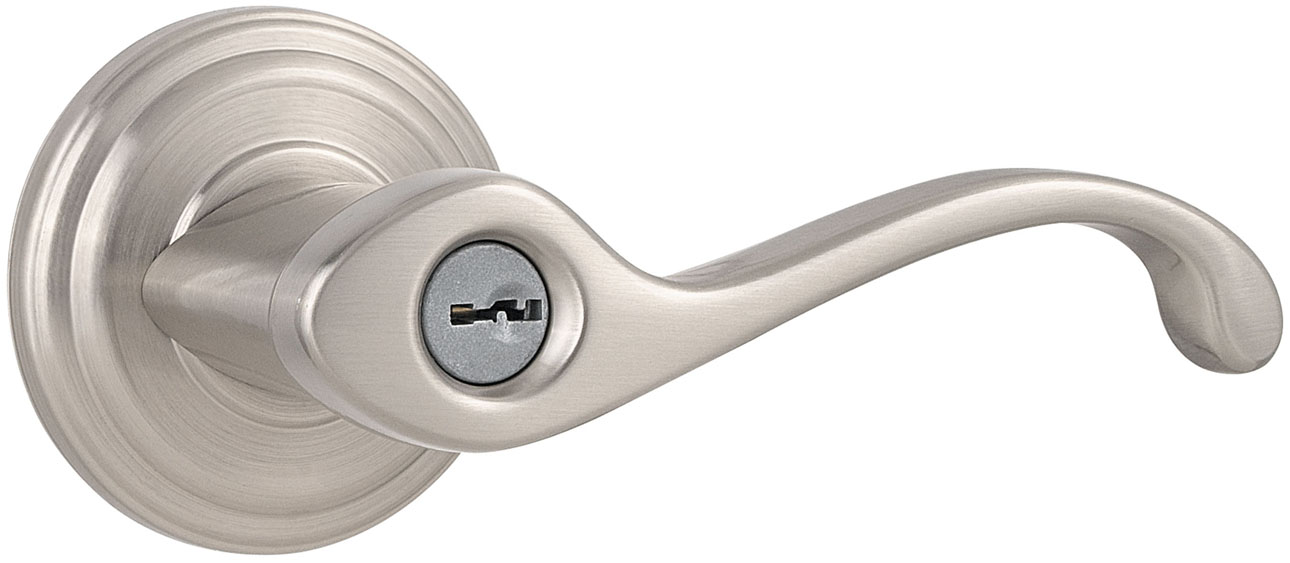Types of Locks - Deadbolts, Smart Locks & Keyless Locks

At Get Locksmith, we want you not just to be happy with the finished product, but also to understand why a certain type of lock is best for your needs. Here you will find summaries of the different types of locks. All of them have different purposes, and some might suit your needs better than others. For more information about having any of these locks installed at your home, or to talk to one of our professional locksmiths about which locks are best for you, contact us. If you are interested in installing the locks yourself, click here to find one of our local stores near you.
Deadbolts
The deadbolt is an incredibly standard feature for most home entry doors. The fact that it has a mechanism that prevents it from turning without the correct key has made it an essential addition to basic home security. There are three basic types of deadbolt: single cylinder, double cylinder, and keyless cylinder.
Single cylinders
Single cylinders open with a key one side and a knob on the other. This is the most standard design of a deadbolt. However, if there is a window right next to the door, a single cylinder deadbolt is not always optimal because if the door is locked, a thief can break the window, reach through, and simply turn the knob to enter the house. That said, they are still incredibly effective security devices.
Double cylinders
These deadbolts require a key to enter or exit from either side. Many experts consider double cylinders more of a risk because in case of an emergency if a key is not readily available, the locked door becomes a roadblock to people trying to leave the home or building. Most building codes ban this type of lock from being used, especially for residential structures.
Keyless cylinders
Keyless cylinders offer you a standard deadbolt lock, however, they either require a password or a key (or both) to enter the house. You can read more about keyless locks here, but keyless cylinder deadbolts with a keyhole can provide an effective blend between standard lock systems and modern lock technology. If they require both a key and a password, that’s two levels of security contained in the same lock. When installing a deadbolt, the handle itself is critical, but also consider the other parts of the mechanism. Without all the parts of the deadbolt and the door working together, installing a security measure like this will be ineffective and useless. Strike Plates hold the lock in place and keep it steady. While some strike plates are not strong enough to serve as more than a decorative function, the actual lock really does need a strong strike plate. The strike plate should be secured into the wall as tightly as possible, using screws that are long enough to reach the door frame and not just the door jamb. Tip: Your deadbolt should be at least 1 inch long or longer. Anything shorter will most likely not be strong enough to hold the door in place. The Door Frame is the forgotten part of the lock. The deadbolt is a burglar’s bad dream because when a deadbolt is correctly and securely installed, the door will not move. However, if the door frame lacks the structural integrity to support the strike plate and the weight of the bolt, the secure points of the deadbolt will not hold up enough to prevent a thief from getting into your home.
Smart Locks
Smart locks, or “virtual keys”, are becoming more popular as people are relying more and more on their smartphones to manage as many aspects of their lives as possible. A smart lock is any type of lock that does not require a key and can be connected through your smartphone via Bluetooth and Wi-Fi. This means that you are able to lock and unlock your doors in your home with a click of a button on your smartphone. In addition to locking and unlocking doors, a smart lock can send an alert directly to your phone whenever someone requests access, rings a doorbell or enters your home. Many mobile apps also allow you to grant remote access if someone approaches with a delivery or has forgotten their key. The smart lock has two parts: a lock and a key. The smartphone becomes the “key” and can unlock the designated lock with your verification. There are several concerns associated with smart locks. Firstly, if for some reason the internet goes down, it would be impossible to enter your home without a manual key. Therefore, it is strongly recommended to always have a copy of your manual key on hand, regardless of how reliable the smart lock is believed to be. Because the smart lock is associated with WiFi, it can easily be hacked into. As a precaution, it is best to keep your home WiFi encrypted (if possible, use encryption that requires two modes of verification) and use a strong password. Another concern is that the smart locks operate on batteries that can die without warning. If you decide to upgrade to a smart lock system, ensure that the batteries are changed regularly and always working properly. The benefit of smart locks in today’s day and age is convenience and accessibility. Being able to access and control your home locks from any location diminishes any anxiety of whether or not your home is securely locked. It also allows you to unlock the door for neighbors who need to borrow something, the dog walker, the delivery person with the large package, or your child who forgot their key after school. Before installing any smart locks, ask your experienced locksmith for any advice on which system is best for your needs.
Keyless Locks
Keyless locks are any type of locks that do not necessarily require a manual key for entrance. Instead, the user will gain entrance by entering a passcode to the lock. They differ from smart locks because the programming is done manually as opposed to via a smartphone, and as such, they can also not be controlled remotely. Keyless locks provide high security since every user needs the passcode to unlock the doors. The added benefit is that even if these locks contain a manual keyhole attached to a standard lock, the door will not open without the addition of the passcode. They are usually used in commercial facilities and not in a private home. Another advantage is you do not need to worry about misplacing your keys and being locked out of your home; as long as you have the passcode, you are able to enter the house. Remember it is important to choose a passcode that is not easily guessed such as “1234,” to prevent any intruders into your home. The keyless locks run on battery life, so it is highly recommended to check the batteries often and change them regularly. They can also be attached to a manual lock to work in conjunction with each other. The most convenient thing about keyless locks is that you can constantly change the passcode at any point, so if you believe there is a threat of theft, you do not have to race out to change or rekey all your locks. Plus, the keyless locks come with instruction booklets, or are simple enough on their own, that changing the codes is only a minimal inconvenience. Consider upgrading your home locks to a keyless entry system for better security and accessibility.









